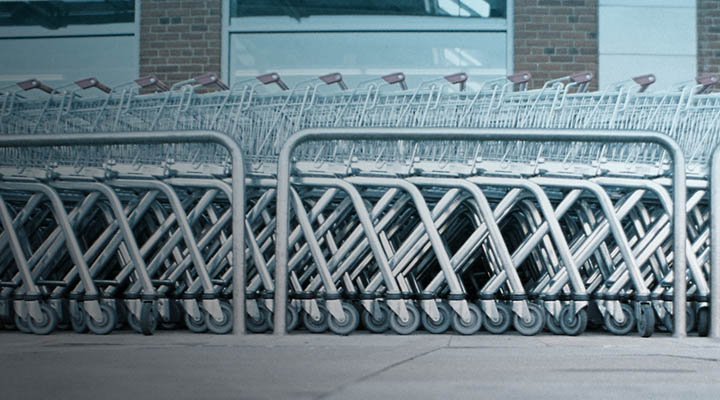One has to wonder whether the discounters are really starting to have an impact internally at Sainsbury's with margins being squeezed tighter and tighter.Last week saw two traditional British cornerstone retailers release their latest results, of both mixed quality and to a mixed reception from analysts and the market alike.
Sainsbury’s saw an eye-watering 91% drop in profits, but largely due to its “one-off property write-down” which have seen store closures impact bottom line to the tune of £200m. £35m worth of redundancy costs gave an added pinch. If we remove these ‘one-off’ costs from the equation, profits were still down 15%, although this was in-line with forecasts. On this occasion, blaming the hotter-than-usual weather and increased expenditure on marketing activities… Two classic excuses for a fall in profits and one has to wonder whether the discounters are really starting to have an impact internally at Sainsbury’s, with margins being squeezed tighter and tighter.
The portfolio rationalisation programme will eventually see 15 existing Sainsbury’s supermarkets close for business (net five closures with new openings), and up-to 70 standalone Argos stores. The strategy being to replace these standalones with stores within supermarkets, sharing sq. ft and diversifying its offering under one roof. There’s no doubt this is an attractive proposition for customers, whether it’s customers with a Click & Collect from Argos or doing their weekly shop at Sainsbury’s, both retailers will hope this will drive additional footfall and revenue from the other.
Marks & Spencer also produced a mixed bag of results last week, seeing more ups and downs than England at the Rugby World Cup (I’m still hurting from that!).
Clothing fell 5.5% like-for-like after stock availability problems, this meant most popular sizes (sizes 10 to 14) sold out too quickly and less popular sizes were left with significant markdown. Steve Rowe, who must be commended for fronting up to these problems, stated that “we should be clear: we underperformed because of our own execution”. The CEO himself has been in-charge of the clothing division since Jill McDonald left, arguably due to the availability issues. There’s some cause for hope though as October’s sales saw an above-market bump of 2.7%, which was due to getting rid of some of the “frumpiness”. We’ll have to see whether this is a more long-term changing of the wind, especially with peak trading just around the corner.
Another cause for concern is the underperforming online sales, with growth coming in under forecasts at 0.2%. This is despite a substantial investment in marketing its “strong, new family-focused programme”. With a strategy of eventually moving one-third of its business to online, these results are behind expectations. M&S will continue to invest to try and kick-start its digital business, search engine optimisation being the latest tool it claims will help lower customer acquisition costs.
One clear positive is the returns being seen from M&S’ food transformation programme, with its food business returning to growth for the first time in more than two years. The programme has seen its ranges rationalised and simplified, and prices reduced in a bid to compete for customer’s pounds from the discounters and make M&S food a more regular purchase, rather than being seen as a ‘treat’ or for a special occasion. Food will continue to be under scrutiny and needs to become a core foundation of the M&S proposition, especially looking forward to the ‘make or break’ Ocado partnership.
And although the market responded negatively to Sainsbury’s results, in my opinion, the impact of the failed Asda merger can’t be underestimated. Sainsbury’s has been forced to pivot away from the merger strategy fairly quickly; now focussing making Argos a fundamental asset within its portfolio and building the foundations to execute on that. It has also revamped some product ranges (Discount & Taste the Difference) and is aiming to have beauty halls in 100 of its stores by Christmas.
Looking forward, Mike Coupe has joined his Tesco counterpart, Dave Lewis, in speaking out about the impact of politics on UK Grocery, warning that both a Christmas Election and a further delayed Brexit will continue to have an adverse effect on consumer confidence and spending. He stated that he was hoping, more than most, for Brexit to be resolved as soon as possible. He believes a resolution would bring back consumer confidence, with customers currently cutting down on their spending due to such uncertainty about the country’s future.
There was also some exciting news for Sainsbury’s this week, with the announcement that it was going ‘down under’ in a 3-year deal with Coles, Australia’s second biggest F&B retailer. The move will help Sainsbury’s to expand its wholesale business and allow Coles to build its own-brand range in a bid to fight off similar competition to that in the UK, from German discounter Aldi.
Now the problem for M&S having such a mixed bag of results, demonstrates just how difficult it is to execute so many different propositions successfully whilst looking to expand digitally at the same time. The continued resurrection of clothing needs to be proven, improved food ranges and prices needs to be sustained, all whilst driving digital growth, loyalty programme expansion and planning for a ground-breaking Ocado partnership. It’s going to be a busy few months and I’ll be awaiting results with bated breath.
Published
April 29, 2024Reading time
3 minutesRelated posts





